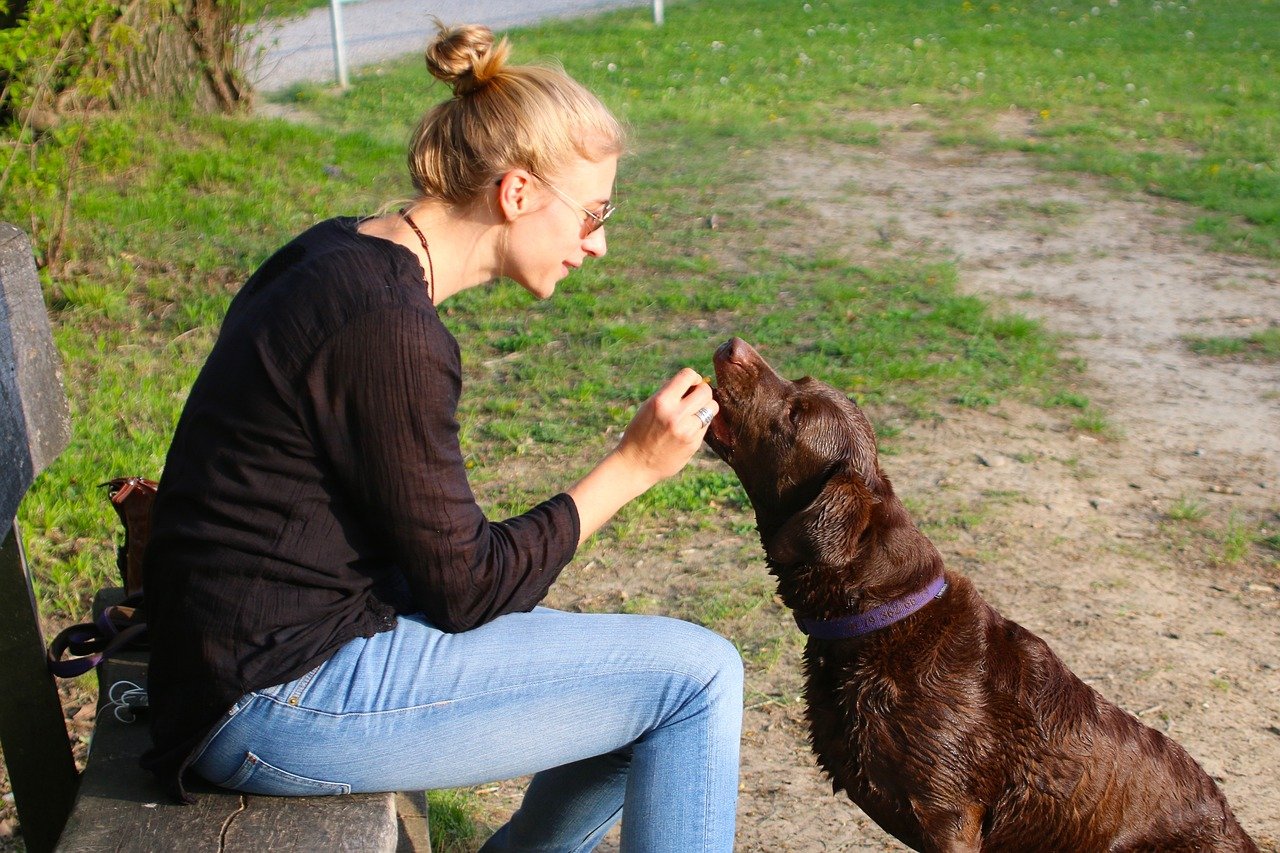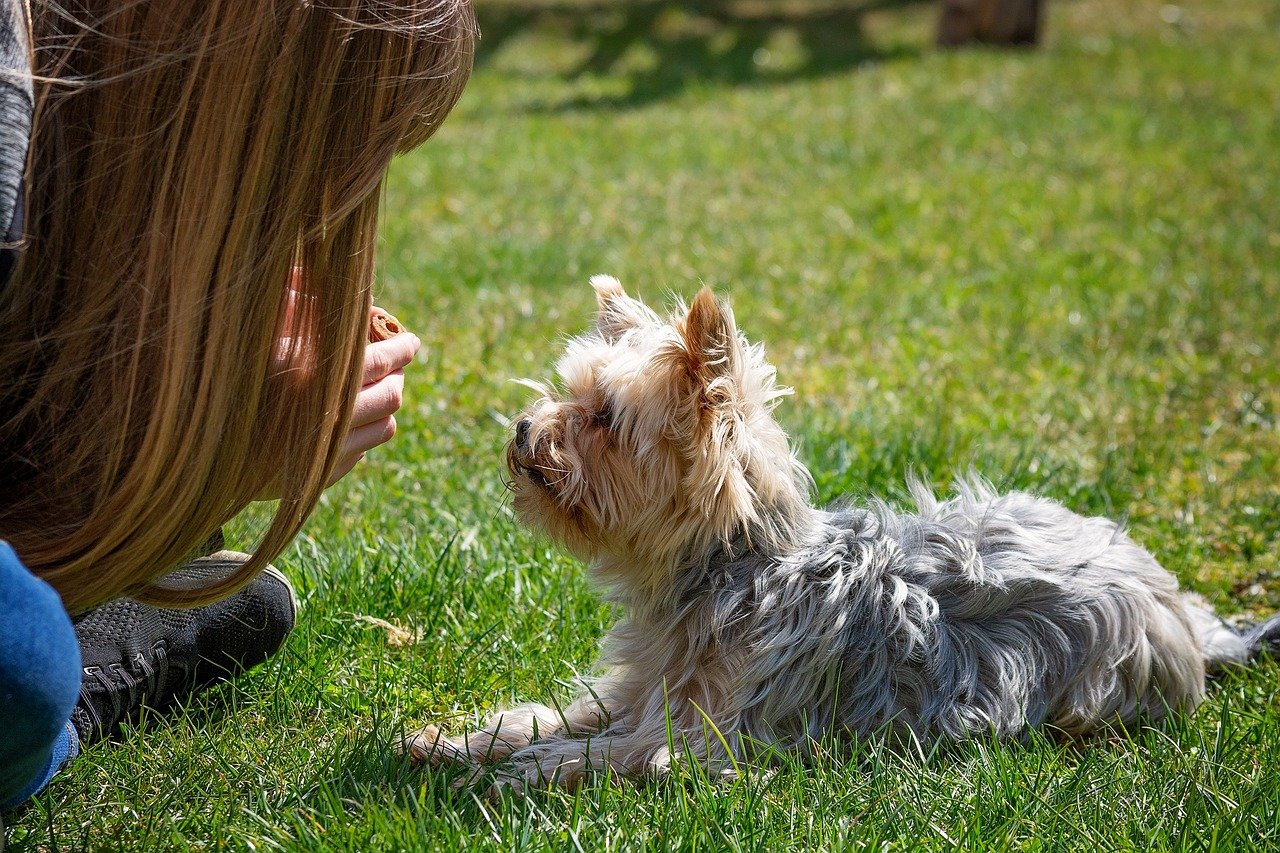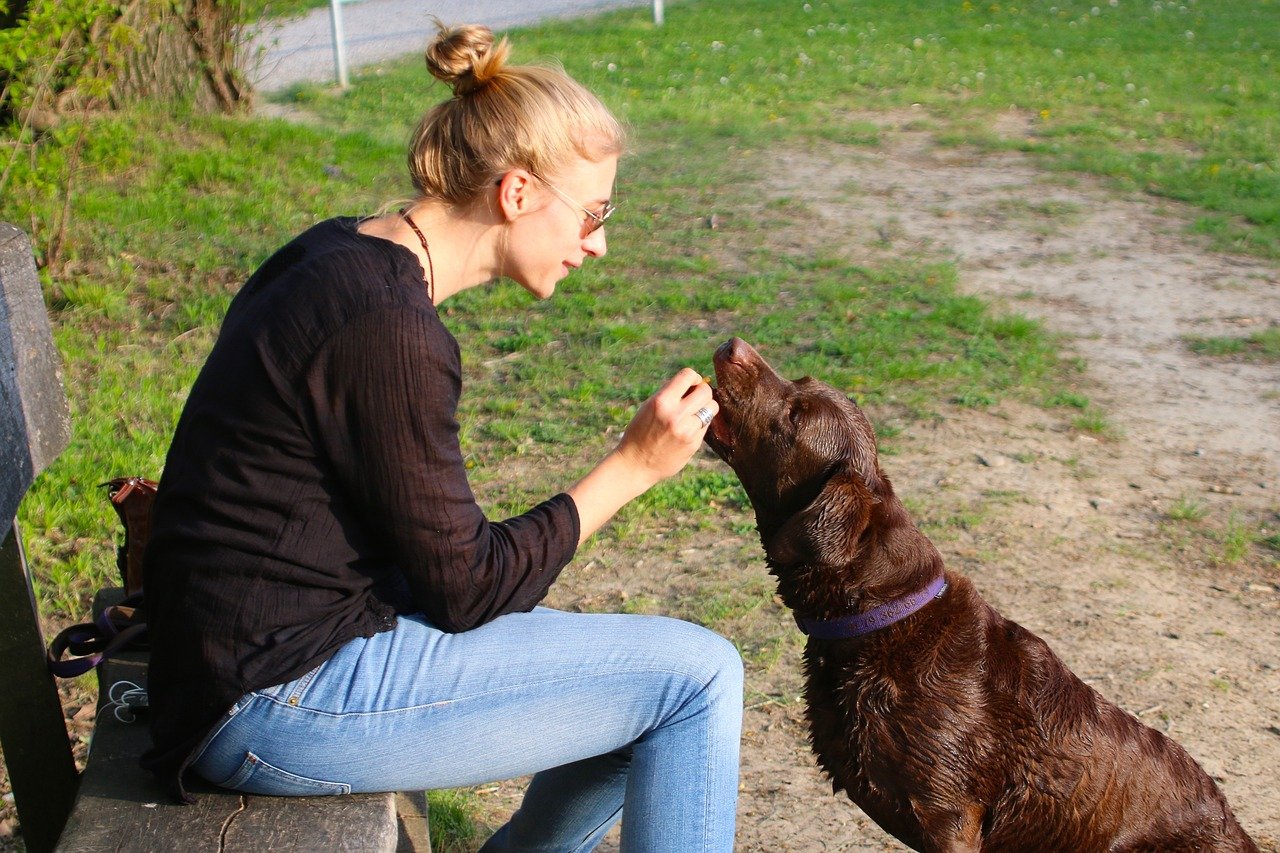Every dog owner knows the joy of coming home to a wagging tail and a furry friend excited to see you. Dogs have a unique way of expressing their happiness and love, often making them cherished members of the family. However, just as there are actions that bring them joy, there are also behaviors that might unknowingly stress them out. This guide explores the ten things you do that make your dog happy and ten that might cause them stress. Understanding these can help foster a more harmonious and joyful relationship between you and your canine companion.
Daily Walks: A Dose of Joy
A dog’s happiness is often reflected in their behavior, from playful antics to affectionate gestures. As a responsible pet owner, knowing what makes your dog happy can enhance their quality of life and strengthen your bond. On the flip side, recognizing what stresses them out is equally crucial. Stress can impact their health, behavior, and overall well-being. By identifying these stressors, you can create a nurturing environment that ensures your dog’s happiness. Let’s delve into these actions and understand our furry friends better.
Taking your dog for a walk is more than just a routine task; it’s an adventure they eagerly anticipate. The sights, sounds, and smells of the outside world are thrilling to them. Imagine being cooped up in the same space all day; walks offer them a refreshing change of scenery. It’s their chance to explore, sniff around, and sometimes meet other dogs, which is equivalent to socializing for us humans.
Moreover, walks provide essential physical exercise that keeps your dog fit and healthy. A brisk walk helps maintain a healthy weight, strengthens their muscles, and boosts their cardiovascular health. It also serves as a mental workout, stimulating their senses and providing a break from monotony. In short, daily walks are a simple yet effective way to bring immense joy to your dog’s life.
Neglecting Walks: A Source of Stress
While daily walks are a joy, skipping them can lead to stress and frustration for your dog. Dogs have a natural instinct to roam and explore, and when deprived of this opportunity, they may become restless. Imagine being denied your daily exercise or social interaction; it can be quite distressing. Lack of activity can also lead to weight gain and health issues, further compounding their stress.
Furthermore, without regular walks, dogs may resort to destructive behavior to release pent-up energy. Chewing on furniture or excessive barking might be their way of expressing boredom or anxiety. It’s essential to prioritize walks as part of your routine to prevent these stress-related behaviors. Consistency in providing outdoor time ensures a balanced, happy life for your pet.
Playtime: An Instant Mood Lifter
Playing with your dog is one of the most enjoyable aspects of owning a pet. Whether it’s a game of fetch, tug-of-war, or simply running around in the yard, playtime is a cherished activity for dogs. It not only provides physical exercise but also strengthens the bond between you and your furry friend. Dogs thrive on interaction, and playtime is a perfect opportunity for them to engage with you on a personal level.
Additionally, playtime stimulates your dog’s mind and keeps them mentally sharp. Puzzles, toys, and games challenge their problem-solving skills and offer a rewarding experience. The laughter and joy during playtime are contagious, making it a delightful experience for both you and your dog. Ensuring regular play sessions can significantly enhance your dog’s happiness and overall well-being.
Ignoring Playtime: A Recipe for Stress

On the flip side, neglecting playtime can lead to stress and behavioral issues in dogs. Just as humans need recreation and downtime, dogs require play to release energy and relax. Without it, they may become bored, anxious, or even depressed. Imagine being stuck in a monotonous routine without any breaks; it’s a scenario that can stress out any living being.
Moreover, the lack of interaction during playtime can affect your bond with your dog. They might feel neglected or unloved, leading to a decrease in trust and affection. Behavioral problems such as chewing, digging, or barking may arise from this stress. Prioritizing playtime ensures a happy, well-adjusted pet who feels loved and content in your company.
Healthy Treats: A Delightful Surprise

Treats are a fantastic way to show your dog love and reward good behavior. Dogs adore treats, and when given in moderation, they can be a delightful surprise. Healthy treats, such as those made from natural ingredients, not only taste good but also contribute to your dog’s well-being. They can provide essential nutrients and serve as an incentive for training.
Using treats as a positive reinforcement tool can help teach your dog commands and good behavior. It’s like receiving a bonus for a job well done, making your dog more eager to learn and please. However, moderation is key, as excessive treats can lead to weight gain. By choosing the right treats and using them wisely, you can make your dog’s day a little brighter.
Overfeeding Treats: A Stressor in Disguise
While treats are a delightful indulgence, overfeeding them can lead to stress and health issues. Dogs may develop obesity and related health problems if given too many treats. Just like humans, excessive indulgence can lead to weight gain, which can cause joint pain and decrease energy levels. Imagine feeling bloated and sluggish; it’s not a pleasant experience for anyone.
Additionally, over-reliance on treats can disrupt your dog’s regular diet and nutrition balance. It may lead to picky eating habits where they refuse regular meals in favor of treats. This nutritional imbalance can stress their body, leading to long-term health complications. Being mindful of treat portions ensures your dog remains healthy and happy without unnecessary stress.
Training: Building Trust and Confidence
Training is an essential aspect of a dog’s life that brings happiness and builds trust between you and your pet. Dogs love to learn and thrive on positive reinforcement. Training sessions offer them mental stimulation and a sense of accomplishment. Imagine the joy of mastering a new skill; dogs experience similar satisfaction when they successfully learn a command.
Training also builds confidence in your dog, making them more secure in different environments. With consistent training, your dog learns to trust you as a leader, strengthening your bond. It provides structure and routine, which dogs find comforting. By dedicating time to train your dog, you ensure they are well-behaved and happy companions.
Lack of Training: A Source of Anxiety

Conversely, neglecting training can lead to stress and anxiety in dogs. Without clear guidance, dogs may become confused and unsure of what is expected of them. Imagine being in a new job without any training; the uncertainty can be quite stressful. Dogs need structure and routine to feel secure, and training provides that framework.
Moreover, a lack of training can result in behavioral issues that stress both the dog and the owner. Untrained dogs may become unruly, leading to frustration and tension in the household. Addressing training needs ensures that your dog is well-adjusted and confident, reducing stress and promoting a harmonious living environment.
Grooming: A Pampering Experience
Regular grooming is more than just keeping your dog clean; it’s a pampering experience that many dogs enjoy. Brushing their coat, trimming their nails, and ensuring their ears and teeth are clean contribute to their overall health. Imagine a spa day where you feel refreshed and rejuvenated; grooming offers a similar feeling for your dog.
Grooming also provides an opportunity for bonding and affection. It allows you to spend quality time with your pet while attending to their needs. Regular grooming sessions prevent matting and skin issues, ensuring your dog feels comfortable and healthy. It’s a simple yet effective way to show your love and care, making your dog feel cherished and content.
Neglecting Grooming: A Stressful Oversight
Neglecting grooming can lead to discomfort and stress for your dog. Overgrown nails, matted fur, and dental issues can cause pain and distress. Imagine wearing ill-fitting clothes or having a toothache; the discomfort is similar for dogs. Regular grooming prevents these problems, ensuring your dog feels comfortable in their own skin.
Moreover, neglecting grooming can lead to health issues that require medical attention. Skin infections, dental disease, and other complications can arise from poor grooming habits. Addressing these needs regularly prevents stress and promotes your dog’s well-being. Prioritizing grooming ensures your dog remains healthy, happy, and stress-free.
Quality Time: A Heartfelt Connection
Spending quality time with your dog is one of the simplest yet most impactful ways to make them happy. Whether it’s cuddling on the couch, going for a drive, or simply being present, dogs cherish these moments. Imagine the joy of spending time with a loved one; dogs experience similar happiness when they are with you.
Quality time strengthens the bond between you and your dog, enhancing their sense of security and love. It’s an opportunity to communicate and understand each other better. By dedicating time to your dog, you show them they are valued and important, fostering a loving and joyful relationship.
Lack of Attention: A Cause for Stress

Neglecting to spend quality time with your dog can lead to stress and feelings of isolation. Dogs are social animals and thrive on interaction and companionship. Imagine feeling ignored or left out; dogs experience similar emotions when deprived of attention. Lack of interaction can lead to depression and anxiety, affecting their overall well-being.
Moreover, neglecting quality time can weaken your bond with your dog. They may become distant or exhibit behavioral problems as a result of feeling unloved. Prioritizing quality time ensures your dog feels connected and cherished, reducing stress and promoting a happy, fulfilling life together.
Understanding Your Dog’s Body Language
Recognizing and understanding your dog’s body language is crucial to their happiness. Dogs communicate through gestures, expressions, and behaviors. By learning to interpret these signals, you can respond to their needs and emotions effectively. Imagine trying to communicate without words; understanding body language bridges that gap.
Being attuned to your dog’s body language helps you identify when they are happy, stressed, or unwell. It enables you to address their needs promptly, ensuring their comfort and happiness. By fostering this understanding, you build a deeper connection and create a harmonious environment where your dog feels understood and loved.
Ignoring Body Language: A Stressful Misstep
Failing to recognize your dog’s body language can lead to stress and misunderstandings. Dogs rely on non-verbal cues to express themselves, and ignoring these signals can cause frustration. Imagine trying to convey your feelings without being understood; it’s a scenario that can lead to stress for your dog.
Moreover, ignoring body language can result in missed signs of discomfort or illness. This oversight can delay necessary interventions, affecting your dog’s health and happiness. By paying attention to their signals, you ensure that your dog feels heard and cared for, reducing stress and promoting a trusting relationship.
Creating a Safe Environment
Providing a safe and secure environment is essential for your dog’s happiness. Dogs need a space where they feel protected and comfortable. Imagine having a sanctuary where you feel at ease; providing such an environment for your dog enhances their sense of security. A safe space includes comfortable bedding, toys, and a quiet area where they can retreat when needed.
Safety also extends to ensuring your home is free from hazards that could harm your dog. Securing electrical cords, keeping toxic substances out of reach, and providing proper fencing are crucial steps. By creating a safe environment, you offer your dog peace of mind, ensuring they feel content and secure in their surroundings.
Unsafe Environment: A Source of Anxiety
An unsafe or stressful environment can lead to anxiety and distress for your dog. Loud noises, clutter, or exposure to potential dangers can make them feel uneasy. Imagine being in a chaotic or unsafe space; it’s a situation that can cause stress for anyone, including dogs.
Moreover, an unsafe environment can lead to accidents or health issues, affecting your dog’s well-being. Ensuring your home is a safe haven prevents these stressors and promotes a calm, happy atmosphere. By addressing potential hazards and creating a secure space, you provide your dog with the comfort and peace they deserve.
Socialization: Broadening Their World
Socialization is an important aspect of a dog’s happiness, allowing them to interact with other dogs and people. Dogs are naturally social creatures, and exposure to different environments and individuals enriches their lives. Imagine the excitement of meeting new people and experiencing new places; socialization offers similar joy to dogs.
Through socialization, dogs learn how to behave appropriately in various situations, enhancing their confidence and adaptability. It reduces fear and anxiety, making them more well-rounded and happy companions. By prioritizing socialization, you ensure your dog enjoys a fulfilling and enriched life, full of exciting experiences.
Lack of Socialization: A Barrier to Happiness
On the other hand, a lack of socialization can lead to fear and stress in dogs. Without exposure to new experiences, they may become anxious or aggressive in unfamiliar situations. Imagine being isolated and unfamiliar with the outside world; it’s a scenario that can cause stress for your dog.
Moreover, a lack of socialization can limit your dog’s experiences and opportunities for joy. They may miss out on the excitement of meeting new friends or exploring new places. Addressing socialization needs ensures your dog is confident and happy, ready to embrace the world with enthusiasm and joy.
In conclusion, understanding the actions that make your dog happy and those that stress them out is key to providing a loving and nurturing environment. By being attentive to their needs and emotions, you can ensure your dog leads a joyful and fulfilling life. Embrace the joy of owning a dog by prioritizing their happiness, and in return, you’ll enjoy a loyal and loving companion.
Jen is a passionate nature lover and ocean conservationist. She has dedicated her life to protecting the environment and preserving the beauty of the natural world. Growing up in a small coastal town, Jen sincerely appreciated the ocean and its inhabitants. She has spent countless hours exploring the shoreline, learning about the creatures that inhabit the waters, and advocating for their protection. Jen is an active member of ocean conservation organizations, and she is committed to educating the public about the importance of conserving wildlife and the natural environment.






